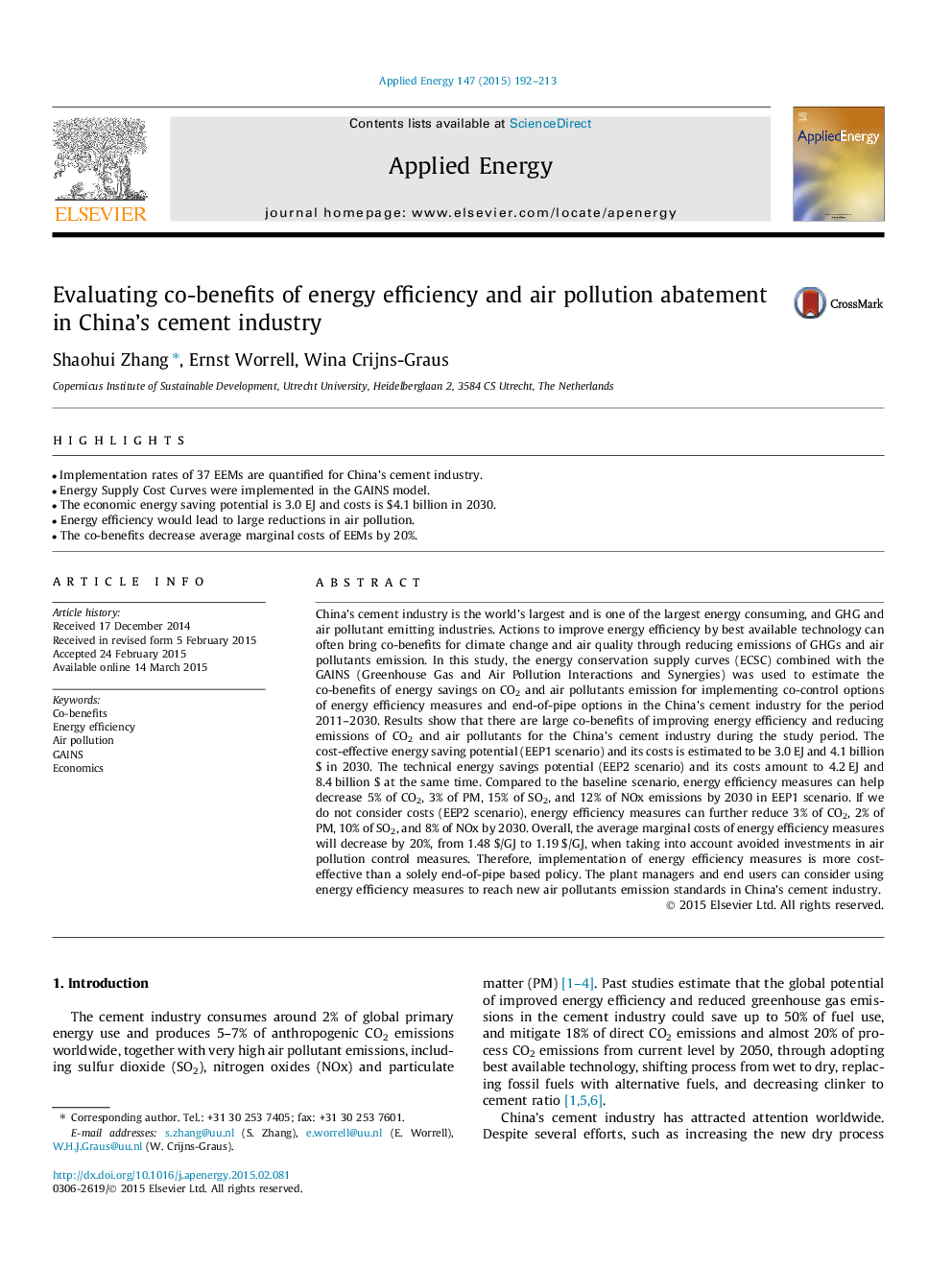| کد مقاله | کد نشریه | سال انتشار | مقاله انگلیسی | نسخه تمام متن |
|---|---|---|---|---|
| 6687415 | 501880 | 2015 | 22 صفحه PDF | دانلود رایگان |
عنوان انگلیسی مقاله ISI
Evaluating co-benefits of energy efficiency and air pollution abatement in China's cement industry
ترجمه فارسی عنوان
ارزیابی مزایای بهره وری انرژی و کاهش آلودگی هوا در صنعت سیمان چین
دانلود مقاله + سفارش ترجمه
دانلود مقاله ISI انگلیسی
رایگان برای ایرانیان
کلمات کلیدی
موضوعات مرتبط
مهندسی و علوم پایه
مهندسی انرژی
مهندسی انرژی و فناوری های برق
چکیده انگلیسی
China's cement industry is the world's largest and is one of the largest energy consuming, and GHG and air pollutant emitting industries. Actions to improve energy efficiency by best available technology can often bring co-benefits for climate change and air quality through reducing emissions of GHGs and air pollutants emission. In this study, the energy conservation supply curves (ECSC) combined with the GAINS (Greenhouse Gas and Air Pollution Interactions and Synergies) was used to estimate the co-benefits of energy savings on CO2 and air pollutants emission for implementing co-control options of energy efficiency measures and end-of-pipe options in the China's cement industry for the period 2011-2030. Results show that there are large co-benefits of improving energy efficiency and reducing emissions of CO2 and air pollutants for the China's cement industry during the study period. The cost-effective energy saving potential (EEP1 scenario) and its costs is estimated to be 3.0Â EJ and 4.1Â billion $ in 2030. The technical energy savings potential (EEP2 scenario) and its costs amount to 4.2Â EJ and 8.4Â billion $ at the same time. Compared to the baseline scenario, energy efficiency measures can help decrease 5% of CO2, 3% of PM, 15% of SO2, and 12% of NOx emissions by 2030 in EEP1 scenario. If we do not consider costs (EEP2 scenario), energy efficiency measures can further reduce 3% of CO2, 2% of PM, 10% of SO2, and 8% of NOx by 2030. Overall, the average marginal costs of energy efficiency measures will decrease by 20%, from 1.48Â $/GJ to 1.19Â $/GJ, when taking into account avoided investments in air pollution control measures. Therefore, implementation of energy efficiency measures is more cost-effective than a solely end-of-pipe based policy. The plant managers and end users can consider using energy efficiency measures to reach new air pollutants emission standards in China's cement industry.
ناشر
Database: Elsevier - ScienceDirect (ساینس دایرکت)
Journal: Applied Energy - Volume 147, 1 June 2015, Pages 192-213
Journal: Applied Energy - Volume 147, 1 June 2015, Pages 192-213
نویسندگان
Shaohui Zhang, Ernst Worrell, Wina Crijns-Graus,
